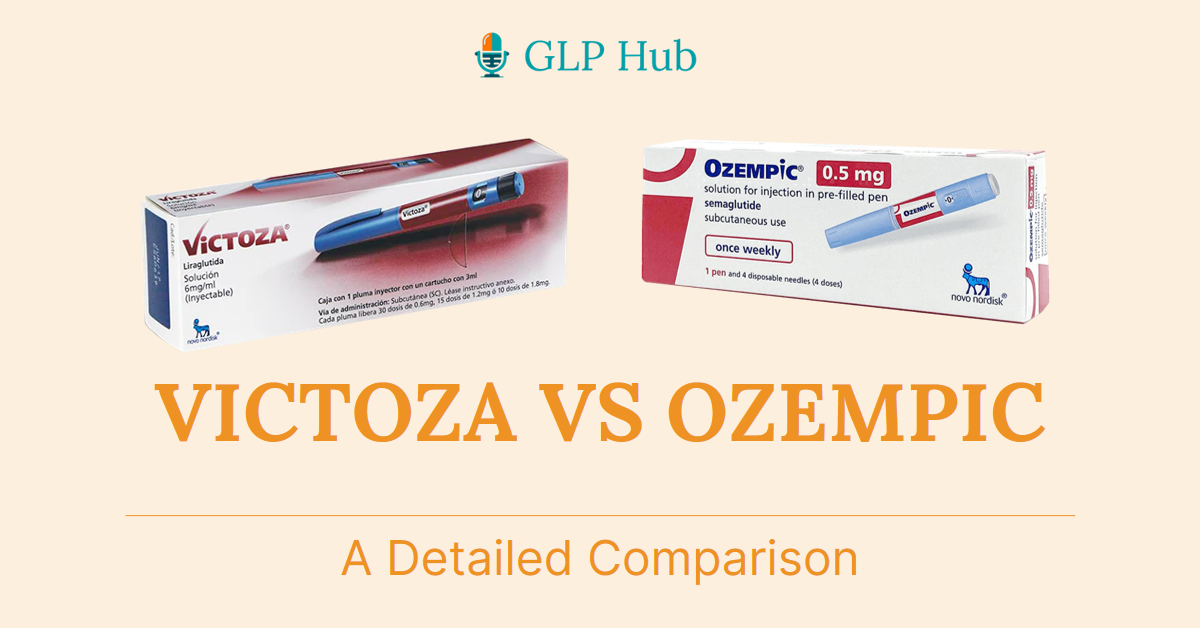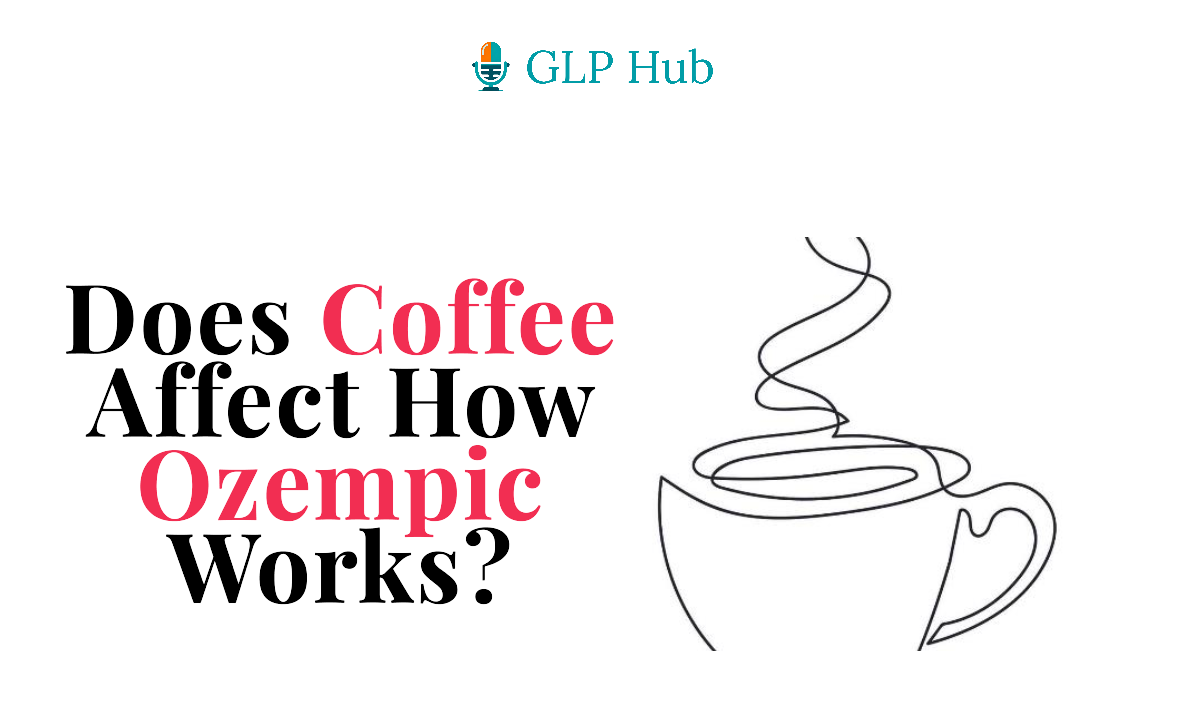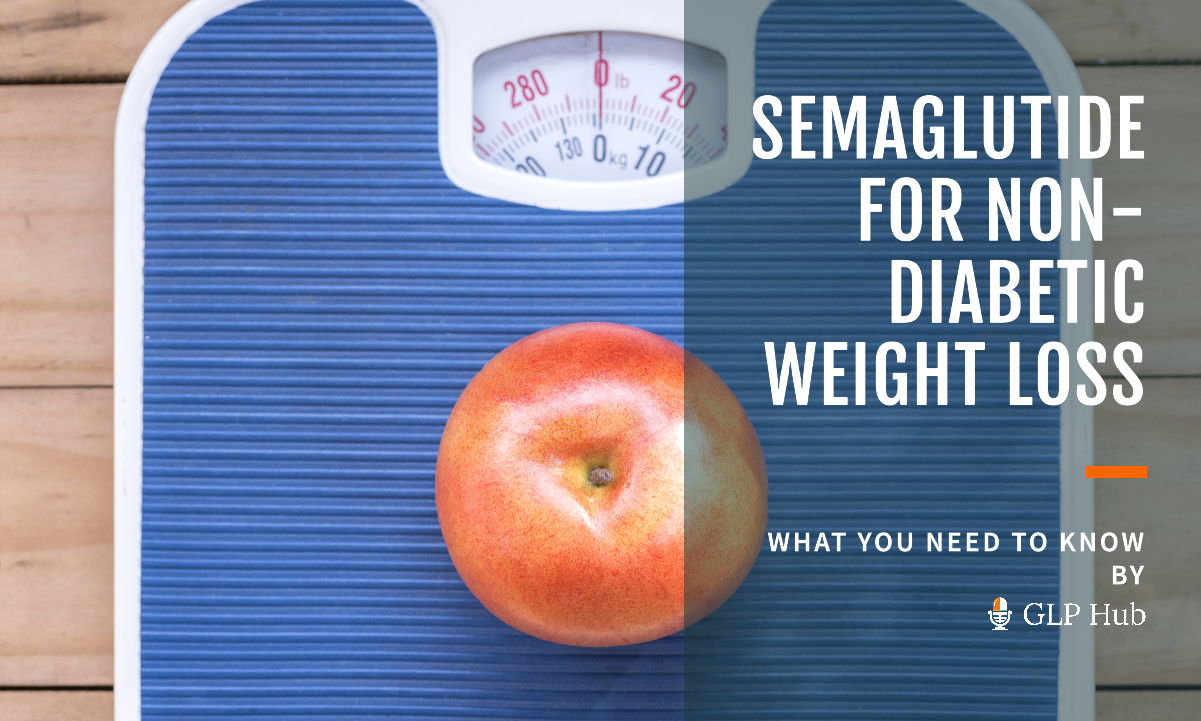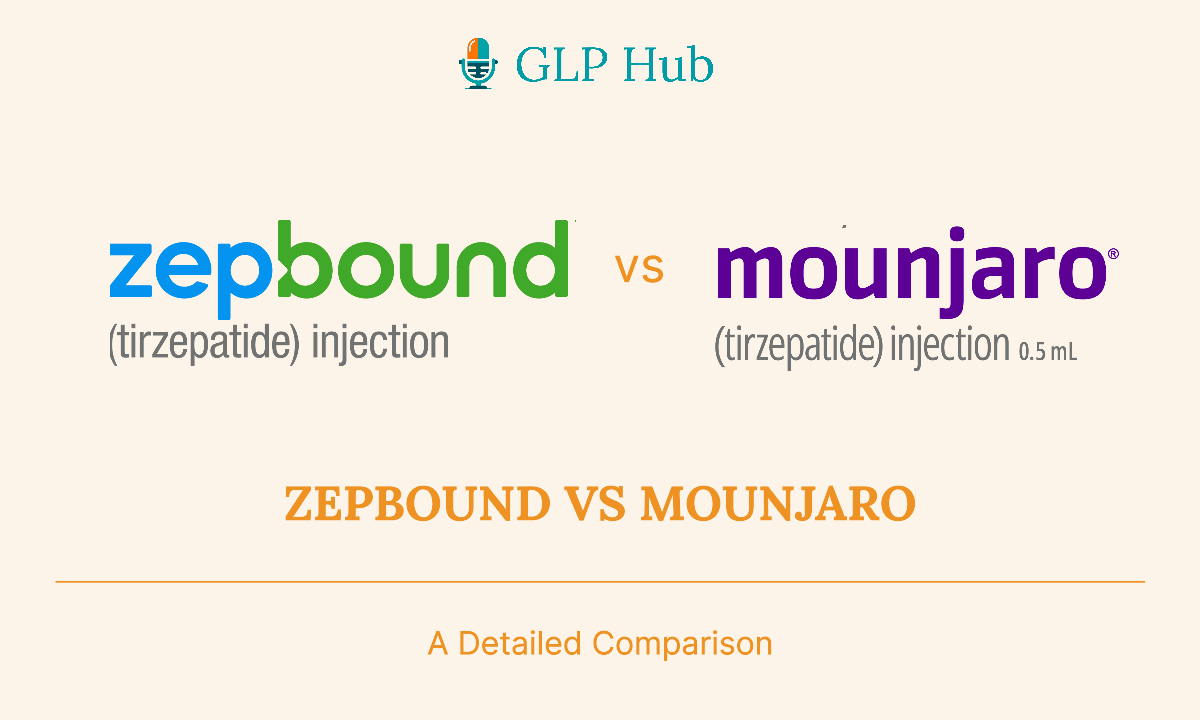Introduction to Victoza and Ozempic
Losing weight remains one of the most challenging endeavors for countless individuals worldwide. Among pharmaceutical options, Victoza and Ozempic stand out not only for their primary role in managing type 2 diabetes but also for their noted benefits in aiding weight loss.
This article delves into a detailed comparison of these two drugs, shedding light on their similarities and differences to equip you with essential information for informed decision-making.
What is Victoza (Liraglutide)?
Victoza, a brand name for Liraglutide, is a GLP-1 receptor agonist that mimics the action of an incretin hormone, thereby stimulating insulin release in response to high blood sugar levels. Approved by the FDA for managing type 2 diabetes, Victoza has also been recognized for its weight loss potential in individuals without diabetes. It operates by enhancing the body’s insulin secretion, reducing appetite through delayed gastric emptying, and suppressing the release of glucagon, a hormone that increases blood sugar levels.
What is Ozempic (Semaglutide)?
In the same therapeutic class as Victoza, Ozempic is another GLP-1 receptor agonist that has been making waves in the realm of diabetes management and weight loss. Semaglutide, the active ingredient in Ozempic, offers a similar mechanism of action by promoting insulin production, curbing appetite, and inhibiting glucagon release.
A notable distinction lies in its administration; Ozempic is designed for once-weekly injections, contrasting with Victoza’s daily dosage requirement, which could be a significant consideration for users valuing convenience and adherence to treatment.
A Comparison of Victoza and Ozempic in this Post
Understanding the nuances between Victoza and Ozempic is crucial for individuals contemplating these medications as part of their weight management plan. This comparison aims to dissect each drug’s efficacy, side effects, dosing regimen, and cost implications. Such an analysis is not only invaluable for those directly affected but also enlightens caregivers, healthcare providers, and anyone interested in the pharmacological landscape of weight loss.
Through this introduction, we aim to pave the way for a comprehensive exploration of Victoza and Ozempic, providing a foundation for informed decision-making in the context of weight loss. With a focus on evidence-based information and the endorsement of medical advice, we proceed to compare these medications in detail, hopeful that this guide will serve as a valuable resource for all readers.
As always, consulting with a healthcare professional is imperative before embarking on treatment with Victoza, Ozempic, or any other medication. This ensures that the chosen path aligns with one’s health goals and is navigated with safety and efficacy at the forefront.
Mechanisms of Action for Victoza and Ozempic (i.e. How They Work)
Understanding the pharmacological mechanisms through which Victoza and Ozempic facilitate weight loss is crucial for those considering these medications as part of their health regimen. This section aims to elucidate the complex processes in a more accessible manner, while maintaining a professional tone.
The Role of GLP-1 Receptor Agonists
At the core of both Victoza and Ozempic’s functionality are their roles as GLP-1 receptor agonists. GLP-1, or glucagon-like peptide-1, is a hormone integral to the regulation of glucose metabolism. It orchestrates several physiological responses that are pivotal for maintaining blood glucose levels within optimal ranges.
Both medications mimic the action of natural GLP-1 by binding to its receptors, initiating a cascade of beneficial effects:
- Enhanced insulin secretion: In response to elevated blood glucose levels, they stimulate the pancreas to produce insulin, a hormone that facilitates the uptake of glucose by cells, thus reducing blood sugar levels.
- Suppression of glucagon secretion: They inhibit the release of glucagon, a hormone that increases blood glucose levels, thereby preventing hyperglycemia.
- Delay in gastric emptying: By slowing the rate at which the stomach empties its contents, they prolong the sensation of fullness post-meal, which can contribute to reduced calorie intake.
- Appetite suppression: They act on the brain to increase satiety, leading to a decrease in food consumption and, consequently, weight loss.
In short, Victoza and Ozempic leverage the mechanisms of GLP-1 receptor agonism to support weight loss and improve glycemic control in individuals with type 2 diabetes. Their actions include promoting insulin secretion, reducing glucagon production, decelerating gastric emptying, and increasing satiety.
Daily Administration of Victoza
As mentioned earlier in the post, Victoza requires daily subcutaneous injections, offering a consistent therapeutic effect. This regimen supports a steady engagement with the body’s metabolic systems, aiding in gradual weight management and glycemic control.
Weekly Dosage of Ozempic
Conversely, Ozempic is administered once weekly, providing a convenient alternative for individuals seeking less frequent dosing without compromising the efficacy of GLP-1 receptor agonism. This dosing schedule may enhance adherence to the treatment plan and simplify the management of type 2 diabetes and weight loss.
This choice between daily and weekly administration offers flexibility in aligning the treatment with individual preferences and lifestyles.
Efficacy in Weight Loss of Victoza and Ozempic
Which one works better?
When evaluating the effectiveness of Victoza and Ozempic for weight loss, it is essential to examine the evidence from clinical studies and real-world outcomes. Both medications, while primarily used for managing type 2 diabetes, have shown promising results in facilitating weight loss in individuals with and without diabetes.
Victoza’s Weight Loss Potential
Victoza (Liraglutide), through its GLP-1 receptor agonism, has demonstrated significant efficacy in weight loss among patients with type 2 diabetes. Clinical trials have consistently shown that Victoza, when used in conjunction with lifestyle modifications such as diet and exercise, leads to substantial weight reduction.
For instance, the SCALE Diabetes trial reported an average weight loss of approximately 6% of body weight over 56 weeks in participants treated with Liraglutide, compared to those on a placebo. Furthermore, Victoza has been approved by the FDA for weight management under the brand name Saxenda, highlighting its effectiveness in weight control beyond diabetes management.
Ozempic’s Role in Weight Reduction
Ozempic (Semaglutide) has also been recognized for its weight loss benefits, with studies indicating even greater efficacy than Liraglutide. The SUSTAIN trials, a series of Phase 3, randomized, controlled trials, have provided evidence of Semaglutide’s ability to induce weight loss. Participants receiving Ozempic experienced an average weight reduction that surpassed that observed with Victoza, with some trials reporting an average loss of up to 9.2% of body weight over a similar period.
Notably, Semaglutide at a higher dose is marketed as Wegovy for weight management, affirming its potent effect on weight loss.
Comparative Studies and Considerations
Comparing Victoza and Ozempic for Weight Loss
Comparative studies between Victoza and Ozempic suggest that while both are effective, Ozempic may be slightly better for weight loss than Victoza, attributed to its longer half-life and higher potency as a GLP-1 receptor agonist.
However, the choice between Victoza and Ozempic for weight loss should consider various factors, including the individual’s health status, treatment goals, and potential side effects (read below).
Side Effects and Safety of Victoza and Ozempic
When considering any medication for weight loss, understanding the potential side effects and safety profile is paramount. Victoza (Liraglutide) and Ozempic (Semaglutide), as GLP-1 receptor agonists, share similar side effects due to their mechanism of action. However, the incidence and severity of these effects can vary between individuals.
Common Side Effects of Victoza and Ozempic
Both Victoza and Ozempic are associated with a range of common side effects, primarily gastrointestinal in nature. These include:
- Nausea and vomiting: A frequent initial reaction that tends to decrease over time.
- Diarrhea: Occurring in some individuals, which can usually be managed with dietary adjustments.
- Appetite loss: While beneficial for weight loss, it can sometimes lead to inadequate nutrition if not monitored.
- Abdominal pain: Experienced by some users, often transient.
- Constipation: A possible side effect that may require dietary or medicinal intervention to manage.
These side effects are generally mild to moderate in intensity and tend to improve as the body adjusts to the medication over time.
Serious Side Effects and Considerations
While less common, there are serious side effects and safety considerations associated with Victoza and Ozempic that warrant attention:
- Pancreatitis: Both medications carry a risk of pancreatitis, a serious and potentially life-threatening condition. Symptoms such as severe abdominal pain should prompt immediate medical evaluation.
- Thyroid C-cell tumors: In animal studies, GLP-1 receptor agonists have been linked to thyroid C-cell tumors. While it’s unclear if this risk applies to humans, caution is advised, especially in individuals with a family history of thyroid cancer.
- Hypoglycemia: When used in combination with other medications for diabetes, there’s an increased risk of hypoglycemia (low blood sugar levels). Monitoring and adjustment of dosages may be necessary.
- Kidney damage: Cases of acute kidney injury have been reported, often related to dehydration from gastrointestinal side effects. Adequate hydration and monitoring of kidney function are important.
- Gallbladder issues: An increased risk of gallbladder problems, including gallstones, has been observed, necessitating awareness of related symptoms.
Safety Profile and Monitoring
The overall safety profile of Victoza and Ozempic is considered favorable for most individuals, especially when potential benefits outweigh the risks. However, it’s crucial for healthcare providers to thoroughly assess each patient’s medical history, potential risk factors, and to monitor for side effects throughout treatment. Regular follow-ups and open communication between patients and healthcare professionals can help manage side effects effectively and ensure the safe use of these medications.
Pros and Cons of Victoza and Ozempic
When comparing Victoza and Ozempic, it’s beneficial to consider both the advantages and the limitations of each medication. Below is a summary of the pros and cons associated with Victoza and Ozempic, highlighting their strengths and areas for consideration.
Pros & Cons of Victoza (Liraglutide)
Pros:
- Versatility in Treatment: Approved for both type 2 diabetes management and weight loss (under the brand name Saxenda), offering a dual benefit for individuals with diabetes seeking weight loss.
- Daily Dosing: Provides a consistent effect on blood glucose levels and appetite suppression, potentially leading to steady weight loss and improved glycemic control.
- Cardiovascular Benefits: Some studies suggest Victoza may reduce the risk of major cardiovascular events, making it a compelling choice for patients with cardiovascular concerns.
Cons:
- Gastrointestinal Side Effects: Common side effects include nausea, diarrhea, and abdominal pain, which can be bothersome, although they often decrease over time.
- Daily Injections: The need for daily administration might be inconvenient for some individuals, impacting adherence to the treatment regimen.
- Cost and Coverage: As with many prescription medications, cost can be a barrier for some patients, depending on insurance coverage and access to patient assistance programs.
Pros & Cons of Ozempic (Semaglutide)
Pros:
- Superior Weight Loss Efficacy: Clinical trials have demonstrated that Ozempic can lead to greater weight loss compared to other GLP-1 receptor agonists, including Victoza, due to its potent formula and longer half-life.
- Weekly Dosing: The convenience of once-weekly injections can improve adherence and is often preferred by patients over daily injections.
- Improvement in Cardiovascular Outcomes: Evidence suggests that Ozempic has cardiovascular benefits, potentially lowering the risk of heart attack, stroke, and cardiovascular death in people with type 2 diabetes.
Cons:
- Potential for More Pronounced Gastrointestinal Side Effects: While both medications can cause gastrointestinal issues, the more potent effect of Ozempic may lead to a higher incidence or severity of these side effects for some individuals.
- Risk of Retinopathy Complications: In some studies, Semaglutide was associated with a higher risk of developing diabetic retinopathy complications in patients with type 2 diabetes. This risk necessitates careful consideration and monitoring in patients with a history of diabetic retinopathy.
- Cost Considerations: Similar to Victoza, the cost of Ozempic may pose a financial challenge for some patients, although insurance coverage and patient assistance programs can alleviate some of the burden.
While both Victoza and Ozempic offer significant benefits for individuals looking to achieve weight loss, the choice between them should be based on individual preferences, medical history, potential side effects, and the practical aspects of the treatment regimen, such as dosing frequency and cost.
Conclusion: Making an Informed Choice Between Victoza and Ozempic
The journey to find the most effective and suitable medication for weight loss and diabetes management is highly personal and varies from one individual to another. Victoza and Ozempic, as explored in this detailed comparison, offer promising benefits in aiding significant weight loss. Each medication, however, comes with its own set of advantages and considerations that necessitate a careful and informed decision-making process.
Victoza’s daily dosing and cardiovascular benefits present a viable option for those seeking consistent management of type 2 diabetes and weight, with the added advantage of potentially reducing cardiovascular risks. On the other hand, Ozempic’s once-weekly injection offers a convenient alternative, with superior efficacy in weight loss and similar cardiovascular benefits, making it an attractive choice for individuals prioritizing ease of use and more significant weight reduction.
The side effects associated with both medications, primarily gastrointestinal in nature, along with considerations regarding cost, insurance coverage, and personal health history, are critical factors to weigh. The decision to choose between Victoza and Ozempic should be made in collaboration with a healthcare provider, who can offer guidance based on a comprehensive evaluation of individual health needs, preferences, and potential risks.
FAQ: Victoza vs Ozempic for Weight Loss
What are Victoza and Ozempic?
Victoza (Liraglutide) and Ozempic (Semaglutide) are injectable prescription medications. Both belong to a class of drugs known as GLP-1 receptor agonists, which can aid in weight loss and managing diabetes by affecting appetite and insulin production.
How do Victoza and Ozempic work?
Victoza and Ozempic mimic the action of the GLP-1 hormone, enhancing insulin secretion, suppressing glucagon production, slowing gastric emptying, and promoting a feeling of fullness. This mechanism helps in managing blood sugar levels and supports weight loss.
Which is more effective for weight loss, Victoza or Ozempic?
Clinical studies suggest that Ozempic may offer a greater weight loss benefit compared to Victoza. Ozempic’s formulation allows for a more potent effect on weight reduction, with patients experiencing a higher average weight loss in clinical trials.
What are the common side effects of Victoza and Ozempic?
Both medications can cause gastrointestinal side effects, including nausea, vomiting, diarrhea, abdominal pain, and constipation. These side effects are generally mild to moderate and tend to decrease over time.
Are there any serious side effects associated with Victoza and Ozempic?
Yes, serious side effects include an increased risk of pancreatitis, potential thyroid C-cell tumors, hypoglycemia (especially when taken with other diabetes medications), kidney damage, and gallbladder issues. It’s important to discuss these risks with a healthcare provider.
How often do you take Victoza and Ozempic?
Victoza is taken daily, while Ozempic is administered once a week, offering flexibility and convenience to meet individual preferences and lifestyles.
Can Victoza and Ozempic be used for weight loss and diabetes management simultaneously?
Yes, both medications are effective for managing type 2 diabetes and have been shown to aid in weight loss. They should be used as part of a comprehensive treatment plan that includes diet, exercise, and regular monitoring by a healthcare professional.
How should I choose between Victoza and Ozempic?
The choice between Victoza and Ozempic should be made based on individual health goals, medical history, side effect profile, dosing preference, and cost considerations. Consulting with a healthcare provider is essential to determine the most appropriate medication for your situation.
Do insurance plans cover Victoza and Ozempic?
Coverage for Victoza and Ozempic varies by insurance plan. Patients should check with their insurance provider or explore patient assistance programs offered by the manufacturers for help with the costs.
Is it necessary to consult a doctor before starting Victoza or Ozempic?
Yes, it is crucial to consult a healthcare provider before starting any new medication, including Victoza or Ozempic. A healthcare professional can provide personalized advice based on your health condition, potential risks, and overall treatment goals.





